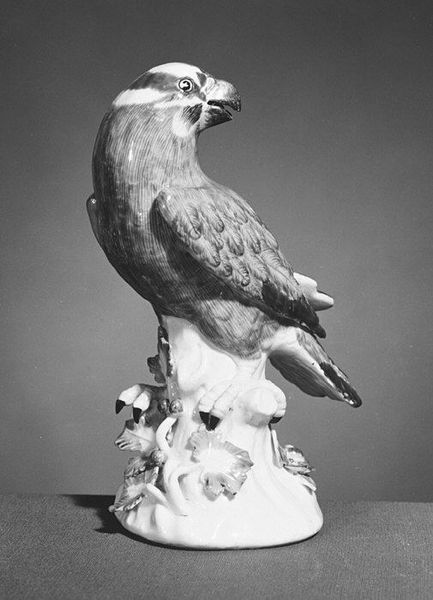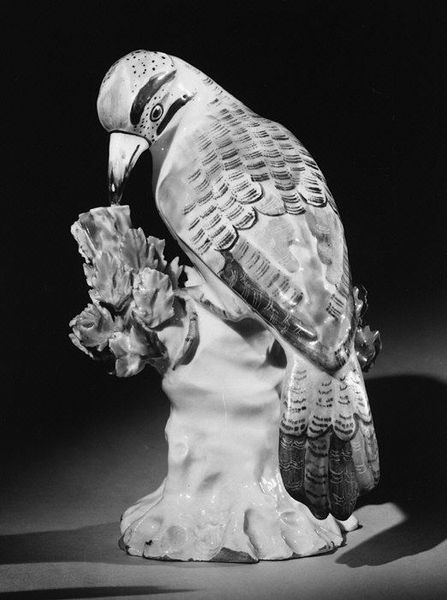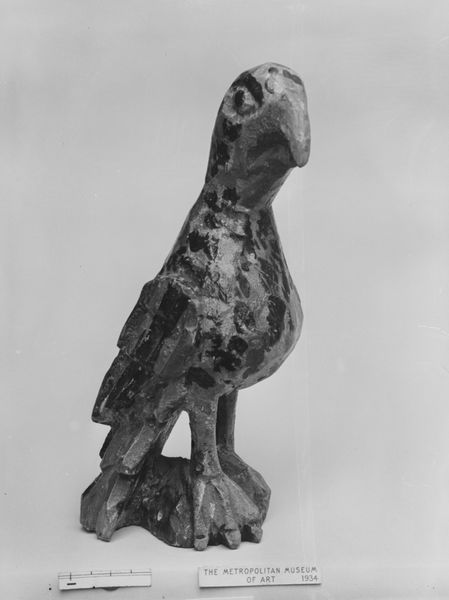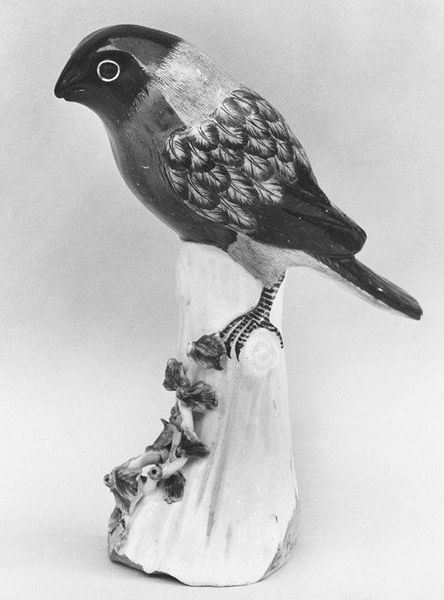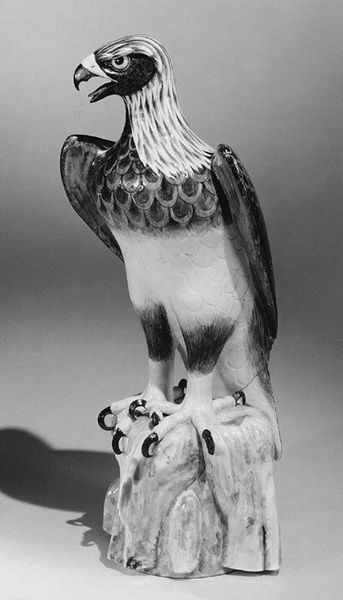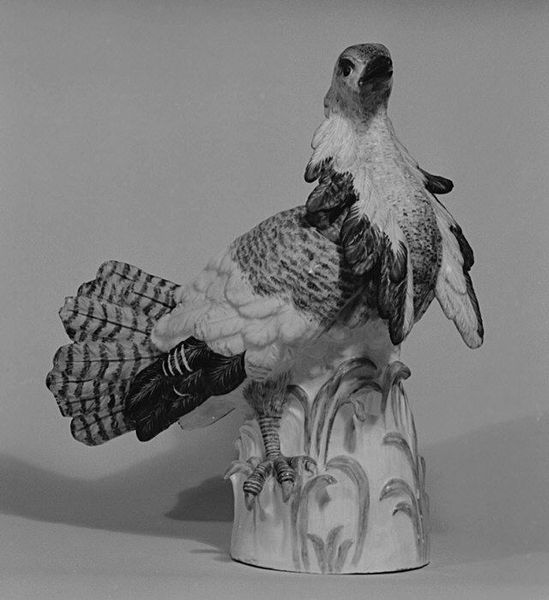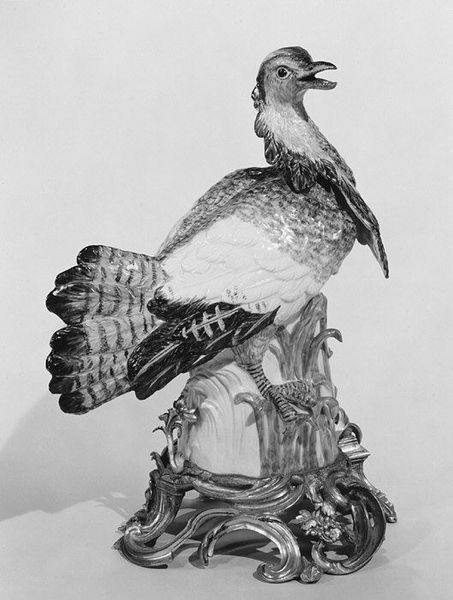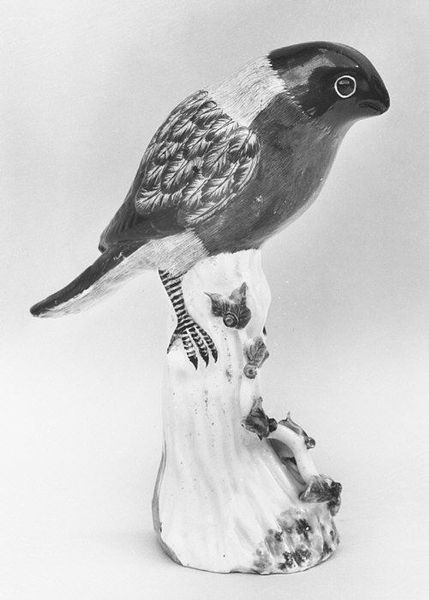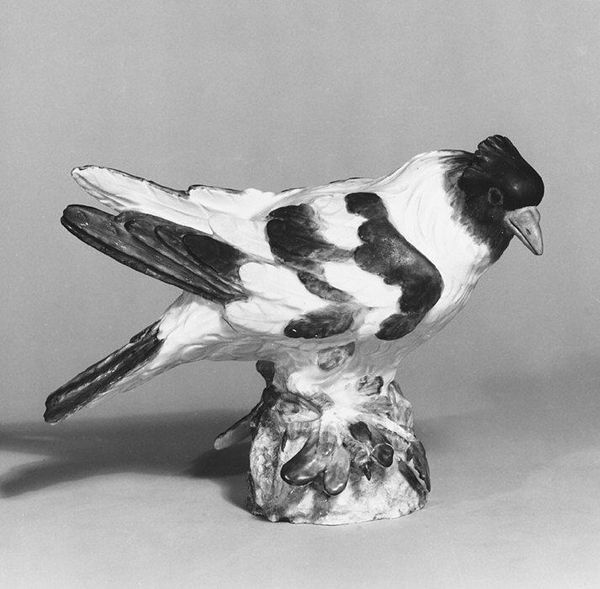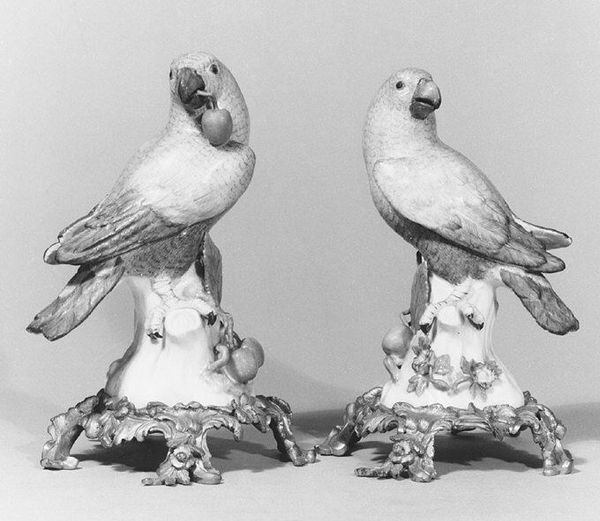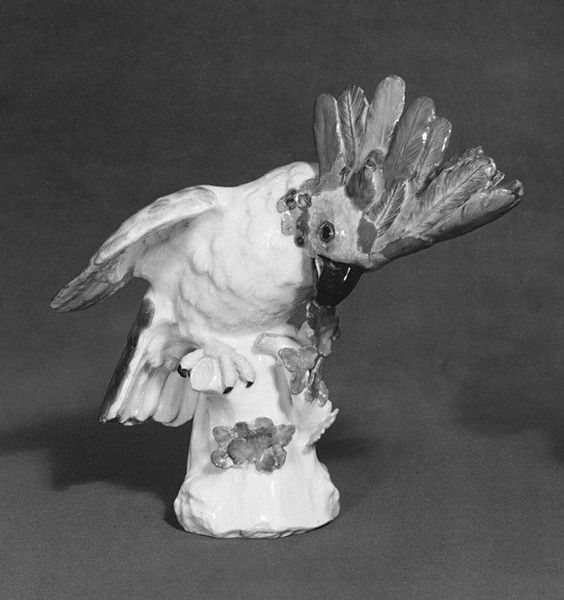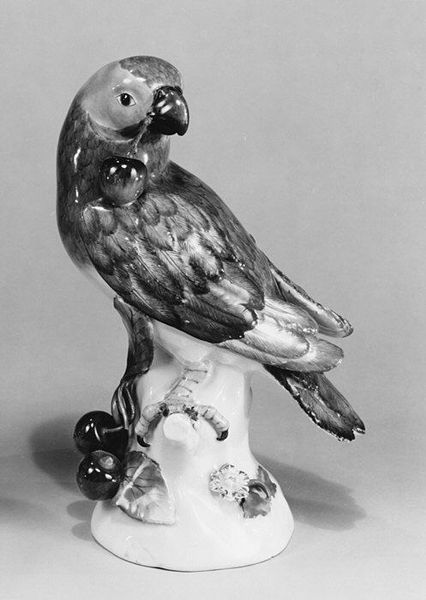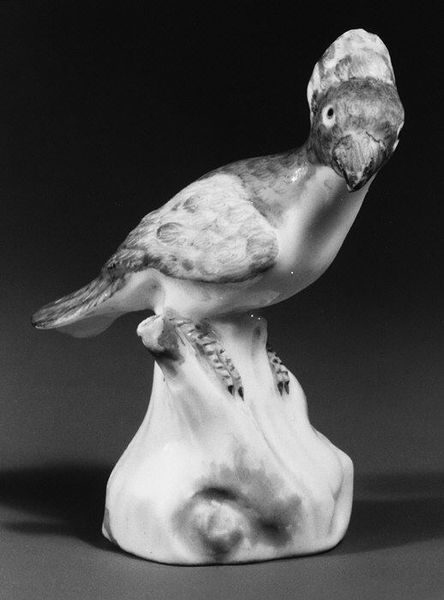
ceramic, porcelain, sculpture
#
sculpture
#
ceramic
#
porcelain
#
sculpture
#
monochrome
#
decorative-art
#
monochrome
Dimensions: Height: 12 1/2 in. (31.8 cm)
Copyright: Public Domain
Curator: Here we have a delightful piece of decorative art from the Ludwigsburg Porcelain Manufactory, sometime between 1760 and 1770. It’s a porcelain sculpture entitled "Parrot." Editor: My initial impression is…elegant melancholy. The monochrome palette really tones down what would otherwise be quite a flamboyant subject. I imagine it perched on a ghostly pirate’s shoulder! Curator: Indeed. Parrots, especially in European art from this period, often symbolize luxury, exoticism, and the expanding global trade. They evoke a sense of the 'other' and the mysteries of faraway lands. Consider how these connotations reflect the anxieties or fascinations of the time. Editor: Fascinating. It’s perched on this faux tree stump, like it’s landed in a stage set rather than its natural habitat. Is that a deliberate commentary on the parrot's captivity, or are we projecting too much? It’s almost pitiful. Curator: That's a very perceptive reading! The placement *could* suggest captivity, a disruption from the wild. Eighteenth-century porcelain animal figures often blurred the lines between art, decoration, and natural history, and this tension gives them particular weight. Editor: And its downward gaze… it’s not showing off, is it? There’s this subdued elegance to it. It makes me consider: What is the parrot *thinking*? And how is that colored by my contemporary awareness of, say, environmental issues? Curator: Absolutely. The slight downturn of the head can certainly evoke contemplation or sadness. As an iconographer, I observe how artistic representations shift alongside societal perspectives. Originally, such pieces were pure displays of wealth, skill and trade connections. Editor: Whereas now it makes you wonder what journey this bird took, and how the materials were acquired. Does knowing it’s survived for centuries amplify that sense of melancholy? Curator: Precisely. The object now accumulates narratives. Editor: That makes a lot of sense. Ultimately it makes me think how an image can really morph with the moment you’re seeing it, right? Curator: Indeed. An excellent reflection of the object's visual story. Editor: Thank you. I feel I know this forlorn parrot a little bit better now!
Comments
No comments
Be the first to comment and join the conversation on the ultimate creative platform.
